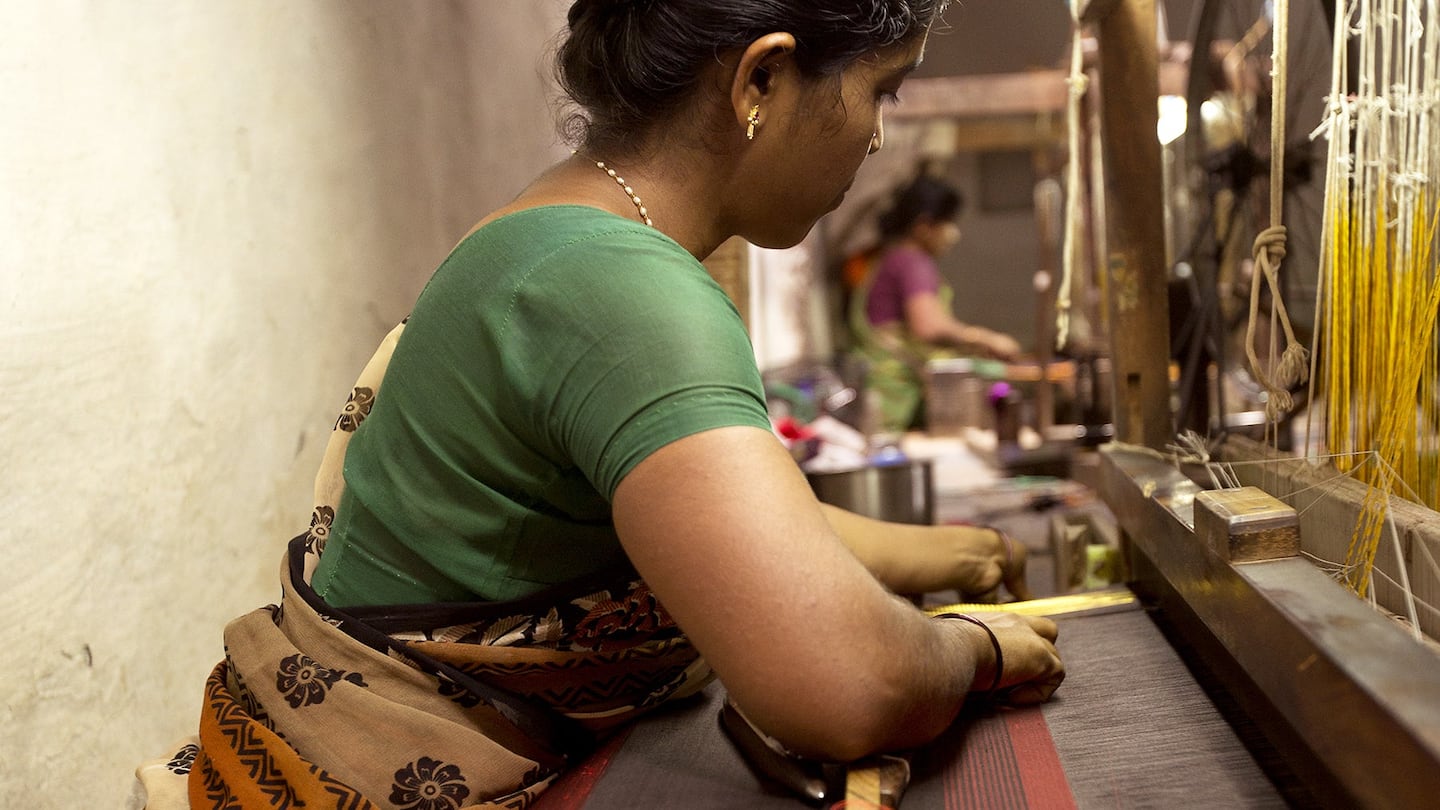
The Business of Fashion
Agenda-setting intelligence, analysis and advice for the global fashion community.

Agenda-setting intelligence, analysis and advice for the global fashion community.

CHENNAI, India — India's growing shoe industry relies on women who work from home, earn less than the minimum wage and lack any legal rights, activists said, urging companies importing from India to check their supply chains for signs of labour exploitation.
Ambur town in the southern Indian state of Tamil Nadu is one of the centres of India's export footwear industry, and has one of the highest concentrations of homeworkers in the country.
While factories in the area employ people at higher salaries to assemble the shoes, manufacturers find it cheaper to outsource the labour intensive process of stitching uppers to women who work from home, using middlemen, the campaigners said.
"By doing this, they circumvent all labour norms that would ensure that the homeworkers had guaranteed work and basic rights under Indian laboyr laws," Gopinath Parakuni, general secretary of Cividep India, told the Thomson Reuters Foundation on Monday.
ADVERTISEMENT
"They don't even get the minimum wage of 126 Indian rupees ($1.91) guaranteed by the Tamil Nadu government," he added.
"These women from poor and marginalized communities ... are part of a clandestine production that exploits their vulnerability," said Parakuni, who campaigns on workers' rights and corporate accountability.
The women, part of a global supply chain making high end shoes, are paid less than $0.14 per pair of shoes, which are sold in Britain for between $60 and $140, according to a joint report published last month by Cividep India and British NGOs, Homeworkers Worldwide and Labour Behind the Label.
The work requires women to sit on the floor, crouched over shoes for long hours, repeatedly pulling a needle through tough leather.
They suffer neck, back and shoulder pain, problems with eyesight and chronic headaches, and injuries to their hands and fingers, the report said.
"At times I work late at night. But when I do so, I can't work the next day, my fingers are swollen," homeworker Sumitra told the report's authors.
"After I complete a pair, it takes about an hour for my hands to return to their normal condition," she said.
"No way is stitching this upper good work ... We develop pain in the chest. Our hands get infected because of the germs in the leather. I also developed fibrosis because of this work," she added.
ADVERTISEMENT
Despite the poor pay and working conditions, the women told the report's authors they felt they had little choice because their family responsibilities meant they were unable to work away from home.
For those who were widowed or had a sick husband, the work provided the family's only source of income.
India is the world's eighth largest exporter of footwear. Between 2012 and 2014, footwear exports in India grew by over 50 percent, with 200 million shoes exported worldwide in 2014, according to the report.
The campaigners are urging companies sourcing leather and leather products from India to carefully map their supply chains, from the processing of leather to the final product.
The NGOs contacted 14 companies for a response on what they were doing to address the risks in their supply chains. Some acknowledged the problem and others gave few details.
The NGOs said India's footwear industry is not unique - shoe industries in many countries rely on homeworkers providing low-cost flexible labour.
"From Portugal to Bulgaria, from Eastern Europe to north Africa to India, homeworkers are to be found in the shoe supply chain and experience similar working conditions whatever the location," the report said.
By Anuradha Nagaraj; editor: Alex Whiting; via the Thomson Reuters Foundation, the charitable arm of Thomson Reuters, that covers humanitarian news, women's rights, trafficking and climate change.
From analysis of the global fashion and beauty industries to career and personal advice, BoF’s founder and CEO, Imran Amed, will be answering your questions on Sunday, February 18, 2024 during London Fashion Week.
The State of Fashion 2024 breaks down the 10 themes that will define the industry in the year ahead.
Imran Amed reviews the most important fashion stories of the year and shares his predictions on what this means for the industry in 2024.
After three days of inspiring talks, guests closed out BoF’s gathering for big thinkers with a black tie gala followed by an intimate performance from Rita Ora — guest starring Billy Porter.